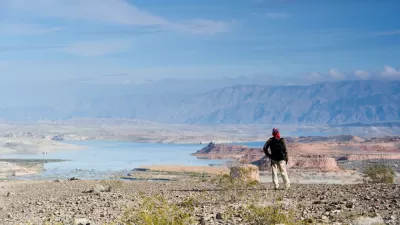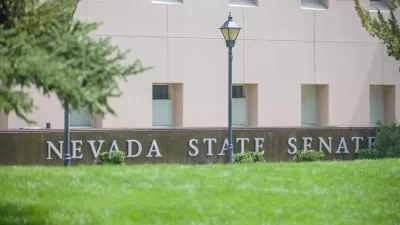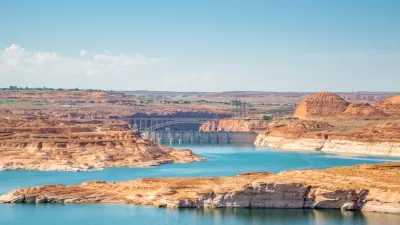California, Arizona, and Nevada are hammering out a plan to address the worsening drought along the Colorado River.

Ian James reports for the Los Angeles Times about a new effort underway in the U.S. Southwest to account for declining water flows and storage capacity on the Colorado River as the region continues to grapple with a once-in-a-millennium megadrought:
Two and a half years after signing a deal aimed at averting a damaging crisis along the Colorado River, water officials from California, Arizona and Nevada are discussing plans to take even less water from the shrinking river and leave it in Lake Mead in an effort to prevent the reservoir from falling to dangerously low levels.
James refers to the 2019 Colorado River Drought Contingency Plan Authorization Act, known commonly as the Drought Contingency Plan or DCP. The DCP was behind the first-ever supply reductions of Colorado River water for Arizona in January 2021. Upper Colorado River Basin states—Colorado, New Mexico, Utah, and Wyoming—followed in May 2021.
As for the new deal for California, Arizona and Nevada, James reports these salient details:
Representatives of water agencies from the three states said they are firming up the details of a deal that would leave an additional 500,000 acre-feet of water in the reservoir next year, and the same amount again in 2023 — about double the quantity of water used annually by Las Vegas and the rest of southern Nevada.
The ongoing drought along the Colorado River has left water levels on Lake Mead at record low-levels since the summer. If the three states can agree on the deal, dubbed the 500+ Plan, California would agree to water reductions prior to Lake Mead reaching levels that would trigger the DCP. The 500+ Plan "would partially involve securing money to pay some water users to voluntarily relinquish water, according to James.
FULL STORY: California, Arizona and Nevada in talks on new plan to save Colorado River water

Planetizen Federal Action Tracker
A weekly monitor of how Trump’s orders and actions are impacting planners and planning in America.

San Francisco's School District Spent $105M To Build Affordable Housing for Teachers — And That's Just the Beginning
SFUSD joins a growing list of school districts using their land holdings to address housing affordability challenges faced by their own employees.

The Tiny, Adorable $7,000 Car Turning Japan Onto EVs
The single seat Mibot charges from a regular plug as quickly as an iPad, and is about half the price of an average EV.

With Protected Lanes, 460% More People Commute by Bike
For those needing more ammo, more data proving what we already knew is here.

In More Metros Than You’d Think, Suburbs are Now More Expensive Than the City
If you're moving to the burbs to save on square footage, data shows you should think again.

The States Losing Rural Delivery Rooms at an Alarming Pace
In some states, as few as 9% of rural hospitals still deliver babies. As a result, rising pre-term births, no adequate pre-term care and "harrowing" close calls are a growing reality.
Urban Design for Planners 1: Software Tools
This six-course series explores essential urban design concepts using open source software and equips planners with the tools they need to participate fully in the urban design process.
Planning for Universal Design
Learn the tools for implementing Universal Design in planning regulations.
Smith Gee Studio
City of Charlotte
City of Camden Redevelopment Agency
City of Astoria
Transportation Research & Education Center (TREC) at Portland State University
US High Speed Rail Association
City of Camden Redevelopment Agency
Municipality of Princeton (NJ)





























